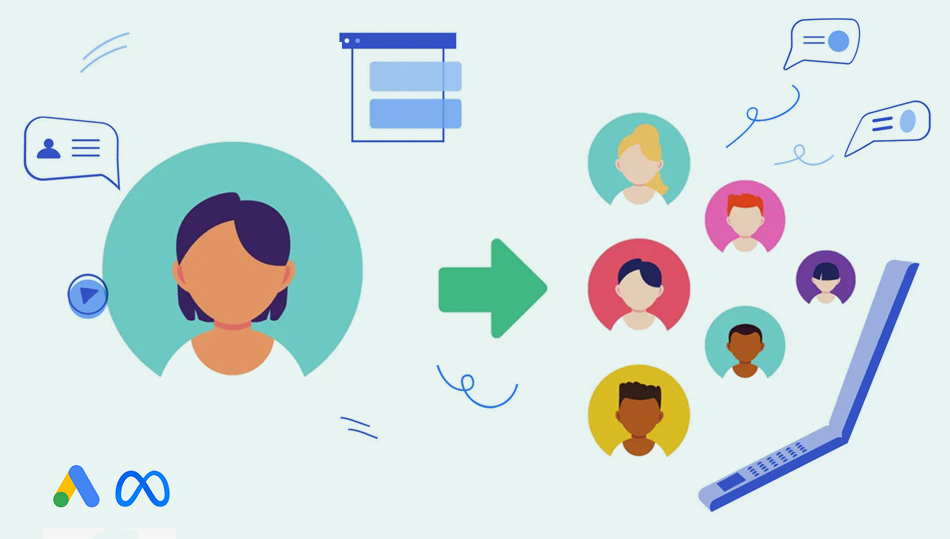In digital advertising, consideration Meta and Google campaigns focus on engaging leads who have previously interacted with your website or social media. The objective is to encourage these leads to take specific actions, such as making a purchase or filling out a form. The duration of these campaigns varies based on several factors, including the target audience, campaign goals, and budget.
When planning consideration campaigns on Meta (Facebook/Instagram) and Google, it’s essential to understand the unique requirements and timelines of each platform. Generally, these campaigns should be run for several weeks to maximize their effectiveness. Here’s a breakdown of the timelines and factors to consider for both Meta and Google ads.
Timelines for Consideration Campaigns on Meta and Google
Meta (Facebook/Instagram) Campaign Ads
- Creation & Planning: 1-2 weeks
- Content Creation (ad copy, photos, video): 1-2 weeks
- Ad Setup: 1 week
- Ads Review and Approval: 2-3 weeks
- Total Duration: 3-5 weeks
Google Campaign Ads
- Keyword Research & Planning: 1-2 weeks
- Ad Copy & Graphics Creation: 1-2 weeks
- Campaign Setup: 1 week
- Testing & Optimization: Ongoing
- Total Duration: 3-5 weeks
Understanding Platform Specifics
Meta Ads often require more time for ad approval, which can take up to two to four weeks. This extended review process means that careful planning and timely submission of ads are crucial.
Google Ads offers more flexibility and typically has quicker ad approval times. However, it is still important to allocate enough time for thorough planning, content creation, and ongoing optimization.
Running Effective Consideration Campaign Ads on Meta & Google
1. Define Campaign Goals
Both platforms support various advertising objectives:
- Awareness: Brand Awareness, Reach
- Consideration: Traffic, Engagement, App Installs, Video Views, Lead Generation, Messages
- Conversion: Conversions, Catalog Sales, Store Traffic
2. Choose the Type of Consideration Campaign
Meta Ads:
- Carousel Ads
- Video Ads
- Slideshow Ads
- Instant Experience Ads
Google Ads:
- Display Ads
- Video Ads on YouTube
- Search Ads
- Shopping Ads
3. Identify the Right Audiences
- Conduct thorough market research.
- Use targeting options on Meta and Google.
- Utilize demographic, interest-based, and behavioral targeting.
- Implement remarketing strategies to re-engage previous website visitors.
4. Strategically Target Ads
Meta Ads:
- Location Targeting
- Interest Targeting
- Behavior Targeting
- Demographic Targeting
- Custom Audiences
- Language Targeting
Google Ads:
- Keyword Targeting
- Location Targeting
- Device Targeting
- Audience Targeting
- Remarketing
- Placement Targeting
- Time and Day Targeting
5. Use Lookalike Audiences
Lookalike audiences help attract new potential customers similar to your existing customer base by targeting people with comparable characteristics and interests.

6. Develop and Optimize Creative Campaigns
- Create compelling ad creatives that grab attention.
- Highlight the unique selling proposition (USP) and include a clear call to action.
- Continuously test and optimize different ad elements through A/B testing.
7. Set Ad Budget and Plan Accordingly
- Allocate the budget based on the campaign objectives.
- Monitor ad spend regularly to ensure the campaign runs efficiently.
- Adjust the budget allocation based on performance metrics.

8. Set the Campaign Schedule
- Align the campaign schedule with the target audience’s activity patterns.
- Use budget scheduling tools to optimize ad spend and campaign duration.
Measuring Campaign Performance
To gauge the success of your consideration campaign, track key metrics such as reach, engagement, click-through rate (CTR), conversions, and return on ad spend (ROAS). Regularly analyze and optimize ad creatives, placements, and audience targeting to improve campaign effectiveness.
Key Performance Indicators (KPIs) to Track:
- CTR: Measures the percentage of people who clicked on your ad.
- CPC: Cost per click, indicating how much you’re spending per click.
- Conversion Rate: The percentage of users who completed a desired action.
- ROAS: Return on ad spend, comparing revenue generated to ad spend.
Reporting and Analyzing Campaign Performance:
- Summarize KPIs and analyze the data to evaluate campaign effectiveness.
- Report outcomes to stakeholders and provide recommendations for future campaigns.
Key Takeaway
Digital advertising is dynamic, with constant updates and changes. Staying updated on policies, trends, and algorithms is crucial for campaign success. The timelines provided are general guidelines and should be adjusted based on specific campaign goals, market conditions, and target audience behavior.
For strategic consideration campaign creation and management, contact our team at info@systechlogic.com or WhatsApp us at +92 346 3324491.
